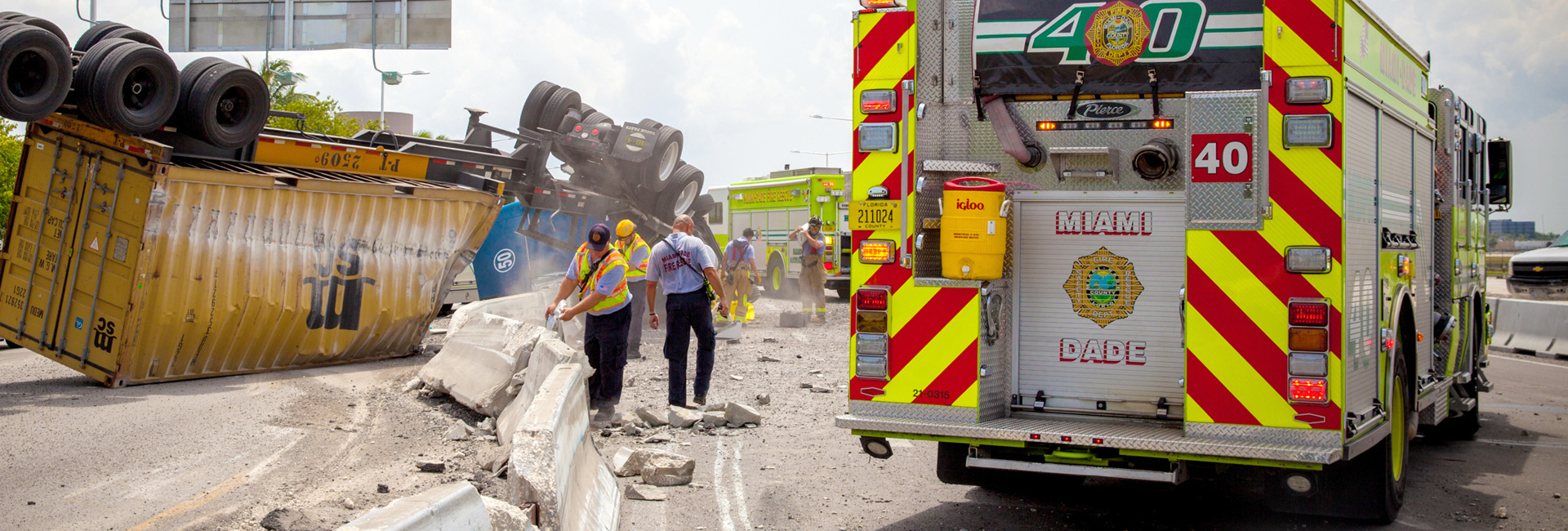Installing shutters can be difficult and time-consuming, so many residents just leave some or all of them up after the first storm has passed. While this might save some time and effort, it’s never worth the threat to life safety.
In 2005 there were 396,000 home fires in the United States, causing over 3,000 deaths and nearly 14,000 injuries. This was just an average year, not the most active in recorded history and these fires occurred without warning. There was no cone of probability to warn residents to prepare for disaster. The difference between life and death in these fires was a rapid escape.
Without devaluing the importance of hurricane preparedness in our community, we have to keep these numbers in perspective. Shutters protect lives during significant storms. But in the absence of an immediate storm threat, shutters can actually become an extreme life safety hazard. They block necessary paths of egress in the event of a fire or other emergency and should always be removed immediately after each storm.Gasoline is one of the most hazardous substances found in residential dwellings. Here are some tips for safe residential storage of fuel:
Store in an approved container, holding five gallons or less, that can be found at the local hardware store.- Storage in one and two-family dwellings is limited to a total of 25 gallons. The 25 gallons are per structure, NOT per family.
- If possible, store gasoline in a cool, dry, ventilated and secure area entirely separate from the house, such as a shed or detached garage.
- Storage within the building is limited to rooms with fire-rated separation from the rest of the structure, such as a garage or storage room opening to the outside only. No other equipment or utilities are allowed in this area.
- Do not store near appliances such as clothes dryers or water pumps.
- Store well away from generators and cars.
- Keep gasoline containers out of reach from children and pets to prevent accidental poisoning. Make sure containers have child-resistant caps.
Leftover gasoline should never be poured down the drain, dumped on the ground, or thrown in the trash. It is Illegal to throw anything at all – including gasoline – into the ocean, bay, rivers, canals, lakes, or other waters of Miami-Dade County.
The best way to handle leftover gasoline is to use it in your car or gasoline powered equipment. If you cannot use it yourself, give it to a responsible adult who can use it. If you are unable to use the fuel or give it away for appropriate use, you may dispose of gasoline at one of Miami-Dade County’s Home Chemical Collections Centers.
Miami-Dade County's Home Chemical Collections Centers will accept a maximum of 10 gallons (two 5-gallon containers) per customer in approved containers. The gasoline must be left in its container with an HCC technician.For more information, visit the Home Chemical Collections Centers or call the Miami-Dade Fire Prevention Office at 786-331-4800
Aside from the life-threatening elements of flames and smoke, one of the biggest challenges that a firefighter may face is the puzzle of clutter encountered upon entering a structure that is fully involved in fire. Even during daylight hours, smoke will quickly obscure all vision inside a dwelling, and there is no way to predict how interior walls will be situated. Add to that, the occupant’s placement of furniture and housekeeping habits and you’ve got a serious race against time to negotiate the most mind-bending maze you can imagine!
In the best of conditions, when a structure is partitioned according to tradition for a given building era, and the rooms are sparsely furnished and free of clutter, firefighters must still resort to blindly following a search pattern along walls and furniture in order to navigate the dwelling. If there is excessive clutter along their path, they are often thrown off course, and rescue efforts can be significantly hampered.
Not only does the clutter make rescue and firefighting operations more difficult, it can also contribute to the fire hazard in the first place. In the case of a recent fire, the occupant worked on electronic equipment that was kept piled all over the house. A couple of appliances were left on and some faulty wiring was suspected to have caused the fire, but once the fire got going, the other appliances caught fire too and escalated the whole thing.
Some of the most common types of clutter that pile up in homes are reading materials like newspapers and magazines that are collected by occupants. It is not uncommon to find piles and piles of them stacked throughout some homes. If a fire occurs in this environment, the clutter just fuels the flames causing rapid expansion throughout the structure and making it difficult or even impossible for occupants to escape. Other typical clutter includes piles of clothes, boxes, and books.
We are all guilty of accumulating some clutter in our lives, but if you take a little time to consider your clutter placement, you can make your home safer for your family. Make a habit of getting rid of stuff that you really don’t use or don’t plan on using. If you collect items that can pile up and take a lot of floor space, consider storing them in a garage or outdoor shed. You can also choose a room in the house that is not occupied for storing clutter items until you can get around to thinning out the pile.
Take a few minutes to walk around your home and ask yourself if you would be able to get out easily in the event of an emergency. Remember to consider all occupants in your home such as children, the elderly or handicapped. Ask yourself also, if a rescuer would be able to find and reach you through the blinding conditions of a significant fire.
Make a point of creating a clear path to safety from anywhere in your home and that will also ensure that there is a clear path for firefighters as well!

Fire Rescue
Raied "Ray" Jadallah
R. David Paulison Fire Rescue Headquarters
9300 NW 41st Street,
Miami, FL 33178-2414
786-331-5000

